There are hopes that human remains found at the site of an ancient church in Belgium could be those of Irish war hero Patrick Sarsfield.
Sarsfield is best known for his defence of Limerick against the forces of William of Orange in 1690, in an event known as the Siege of Limerick.
Sarsfield, fighting for King James II, was eventually defeated, however he helped negotiate the famous Treaty of Limerick, which ended the Williamite war in Ireland.
This led to a historical episode known as the Flight of the Wild Geese where he and 12,000 of his men and their families left for France in 1691.
Sarsfield would rise through the ranks of the French military, but lost his life following the Battle of Landen in modern-day Belgium in 1693.
Records indicate he was buried in an unmarked grave in the small Belgian city of Huy alongside another unnamed French soldier.
Dr Loïc Guyon founded the Sarsfield Homecoming Project in 2020 with the goal of finding Sarsfield's remains and returning them to Limerick, a city in which his personality and legacy are so greatly associated with.
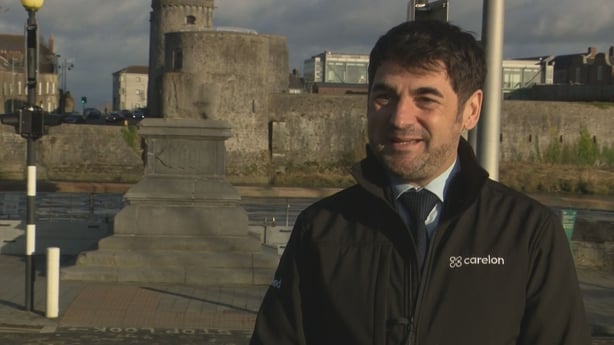
Years of research led Dr Guyon to the site of the centuries-old St Martín’s Church, close to the battlefield where Sarsfield fought for King Louis XIV in August 1693.
"There was one version of the story, the most popular one, that he was fatally wounded on the battlefield and buried there," Dr Guyon said.
"If that version was true, there would have been no chance of ever finding his remains.
"But there was another version as well, which stated that he was only wounded and transported to Huy where he was treated in hospital and died from his wounds and buried there.
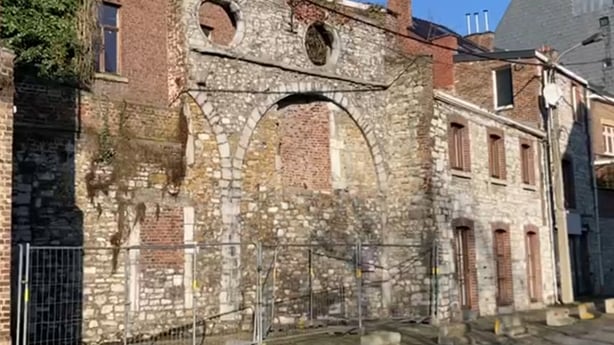
"I started searching the archives, fact-checking everything, not taking anything for granted and I realised that the most popular version was not true.
"I then found historical evidence showing that he was indeed transported to Huy where he passed away in August of 1693."
Today, St Martín’s Church has a lone wall left standing, with a townhouse built above the old church grounds around 100 years ago.
Excavation work began on the site in December 2023, however, it was just this past week that a breakthrough was made in the cellar area of the old building.
Dr Guyon’s team discovered two unmarked graves, where the remains of two men lay.
Frank Coyne, lead archaeologist with the project, said: "The cellar itself was built in the 1920s, when a house was built over the site of the church.
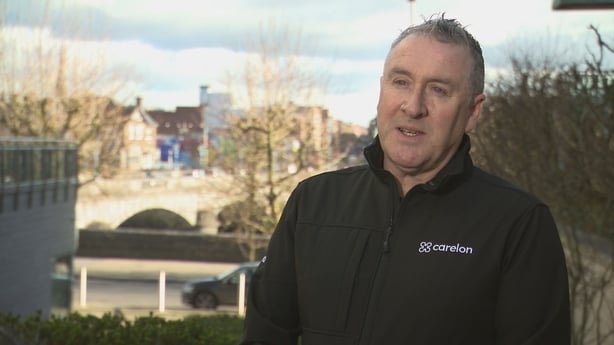
"The church was churned up over the centuries, so it was very difficult to find grave cuts, so we had to go very carefully until we eventually found skeletons.
"We have one man, five foot tall, who is unlikely to be Sarsfield as he was a very tall man.
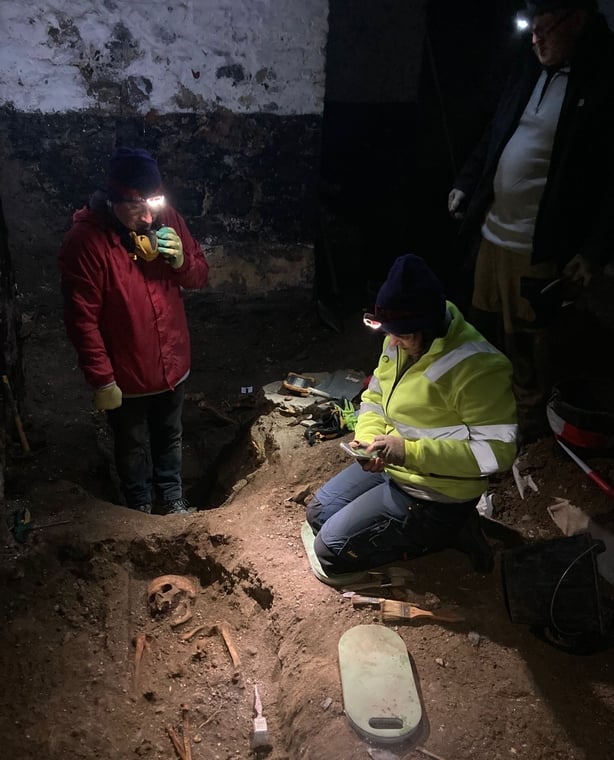
"In the second burial, the remains are in a coffin that is 1.8 metres long. He has a very robust skull, prominent brow ridges, and this person would have been close to six foot tall, which would have been very tall at the time.
"We’re very hopeful because of the size of this person and the robust nature of the skull and arm bones that it’s a good candidate for it to be Patrick Sarsfield."
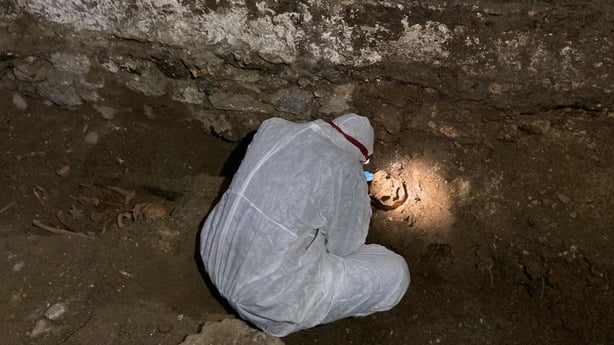
Dr Guyon also said that the discovery they made last week ticks all the boxes of what they were looking for.
"Now we have to remain cautious, it could be two other men who were buried in that church over the course of a long period of time.
"But the signs are here, so there is a clear possibility that we have found the remains of Patrick Sarsfield."
So, more than 330 years since his death, how might it be proven that the remains are those of Patrick Sarsfield?
Dr Guyon and his team rely on two key techniques: radiocarbon dating, which can determine the age of a biological specimen as old as 62,000 years, and DNA tests.
Bone samples taken from the site will be radiocarbon dated to determine if the two men died around the same time as Sarsfield's death.
We need your consent to load this rte-player contentWe use rte-player to manage extra content that can set cookies on your device and collect data about your activity. Please review their details and accept them to load the content.Manage Preferences
Mr Coyne said: "We have also taken a DNA sample. We’ve taken a tooth that will go for DNA analysis.
"The tooth looks like it’s in quite good condition, we generally look for a molar. We hope to know in about a month’s time if its Sarsfield's DNA."
For Dr Guyon, this journey led him on a search for descendants of Sarsfield in order to obtain a DNA sample to match.
He explained: "Unfortunately Patrick Sarsfield had only one son who died at the age of 26 in France without children, so there are no direct descendants of Patrick Sarsfield.
Dr Guyon has pieced together a family tree of the various branches of the Sarsfield's of Ireland.
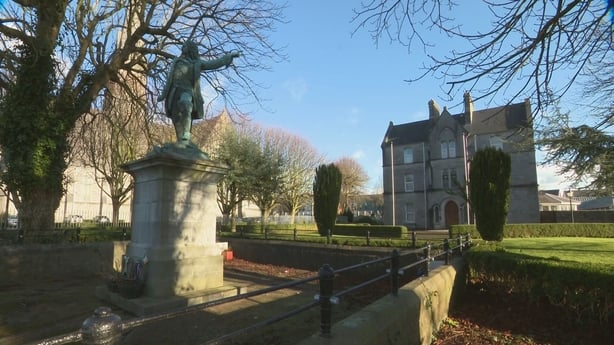
"You have the branch of Lucan, to which Patrick Sarsfield belongs, but you also have the branch of Cork.
"It was one year after I started the project that I was contacted by a descendant of the Cork branch of the Sarsfield family.
"Tim Sarsfield belongs to that Cork branch, and thanks to his family’s research and my research, I could see that he was a descendant of a common ancestor to the Cork and Lucan branches from the 14th century.
"So by comparing the DNA that we found on the site in Huy to Tim Sarsfield’s DNA, we will be able to hopefully prove that this is clearly Patrick Sarsfield."
Dr Guyon’s team now face an anxious but exciting wait for results from the DNA and radiocarbon testing to see if they have finally located Sarsfield’s remains.
If the remains are not those of Sarsfield, the focus of the dig will turn to the garden area of the site.
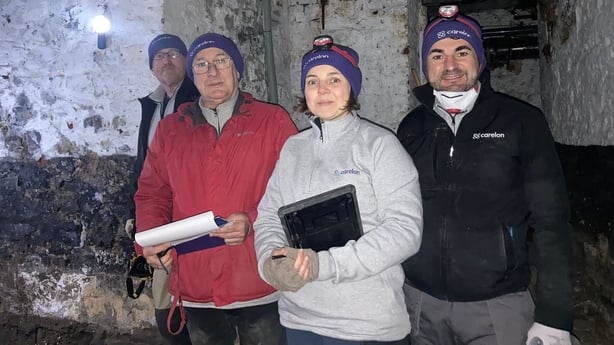
However, if positive results are returned, work will begin on excavating and repatriating his remains back to Limerick.
"It would be a historical moment. It would be a moment charged with a lot of emotions.
"After having worked so long on this project the whole team would be absolutely thrilled to bring back Patrick Sarsfield to Ireland.
"I think it would be extremely significant for Limerick and for the rest of Ireland as well to have this national hero return to the land he fought so bravely to defend.
"My dream would be to bring his remains back to Limerick on a French navy ship," he added.
We need your consent to load this rte-player contentWe use rte-player to manage extra content that can set cookies on your device and collect data about your activity. Please review their details and accept them to load the content.Manage Preferences






